If I may offer some input from a kilt makers standpoint. Let's take fashion out of the question for a moment.
There are three places on the human body where a garment will anatomically sit without riding up or drooping down. This is based on the bones of the body and not 'soft tissue'. The bones do not move but soft tissue like the belly button are different on different men.


The top strap in these photos is at the anatomical waist. If you put a finger right up, under the ribs at the side, and bend in, towards your finger, you will feel a hollow. This is your anatomical waist. This is "full waist height'.
The center strap is at what I call a "mid-waist height". At the spine, the strap is cinched into the small of the back or nape of the spine. It will usually sit just on top of the crest of the pelvis at the side. In the front this may settle in slightly different places on different men depending on their weight. (if the man has a bit of a belly the strap will tend to sit lower in the front than on a slimmer man)
The lower strap is at "low waist height". This is where blue jeans are designed to fit. The strap is resting on the rise of the buttocks in back. At the side, it is down over the top of the crest of the pelvis.
(Please notice that I purposely did not reference the navel or belly button. This is because the position of the navel is different depending on the weight of the person. The more of a belly the guy has, the lower the belly button will be.)
At the time period that the kilt was designed, men's trousers were designed to ride naturally, at the anatomical waist.
 Image from Sears Catalog, 1942
Image from Sears Catalog, 1942
 The Actor Jimmy Stewart during a radio broadcast circa early '50's.
The Actor Jimmy Stewart during a radio broadcast circa early '50's.
To accommodate this anatomical waist height, a kilt was made so that the top strap would cinch into the anatomical waist and flair outward above the top straps. In the back a kilt designed to fit like this will cover the bottom of the short ribs.
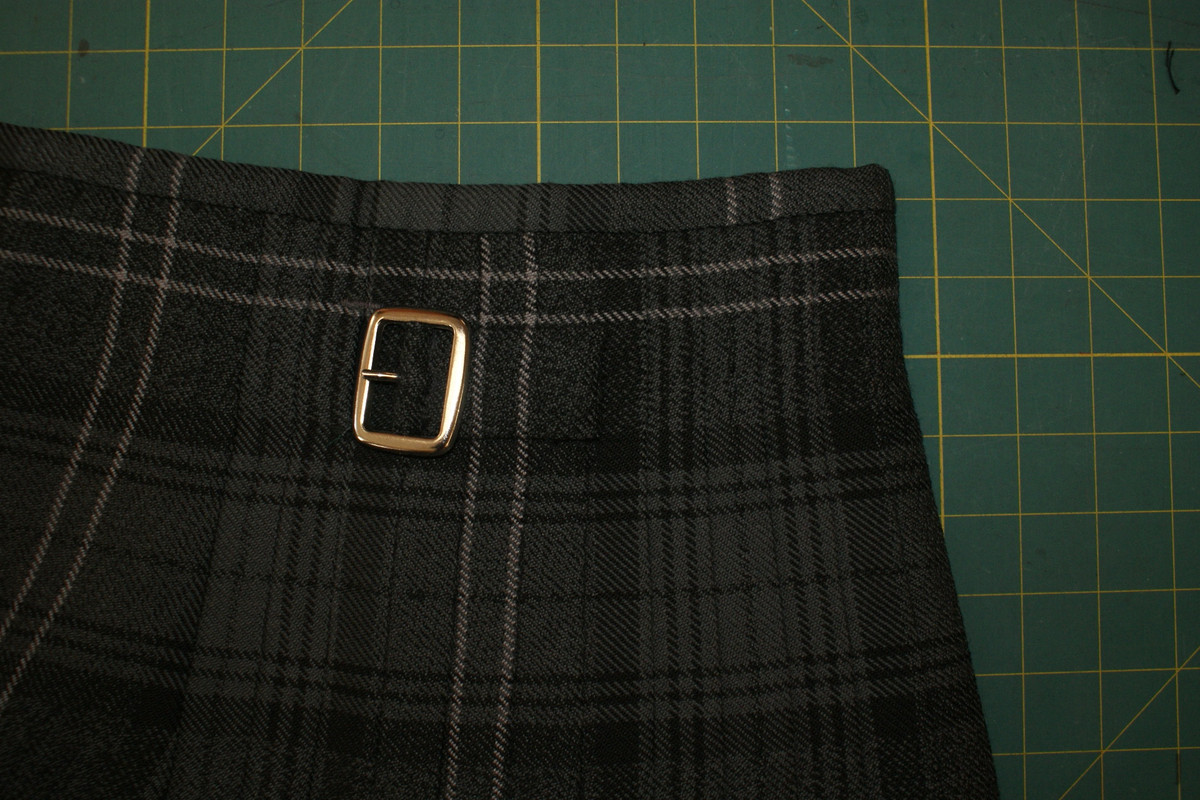
This upper portion of the kilt is called "The Rise" and varies from about 3 inches on some military kilts to 2 inches as described in "The Art of Kiltmaking".
In this photo all three kilts fit me perfectly. The Black Watch kilt on the right is an actual Royal Regt. of Scotland Military kilt with a 3 inch rise above the anatomical waist. The Highland Granite kilt on the left is my Barb Tewksbury kilt with a 2 inch rise above the anatomical waist. In the middle I am wearing one of my Contemporary kilts with a 1 inch rise worn at Mid Waist Height.

One common way we see kilts made today - is that while the top straps are still below the level of the top of the kilt, the flare of the Rise above the straps is absent. The smallest part of the kilt is at the top of the top band. This smallest part of the kilt will naturally try to settle into one of the three anatomical places of the body. Sometimes this will cause the straps to feel looser and the straps doop lower than they would on another kilt made with the flare.
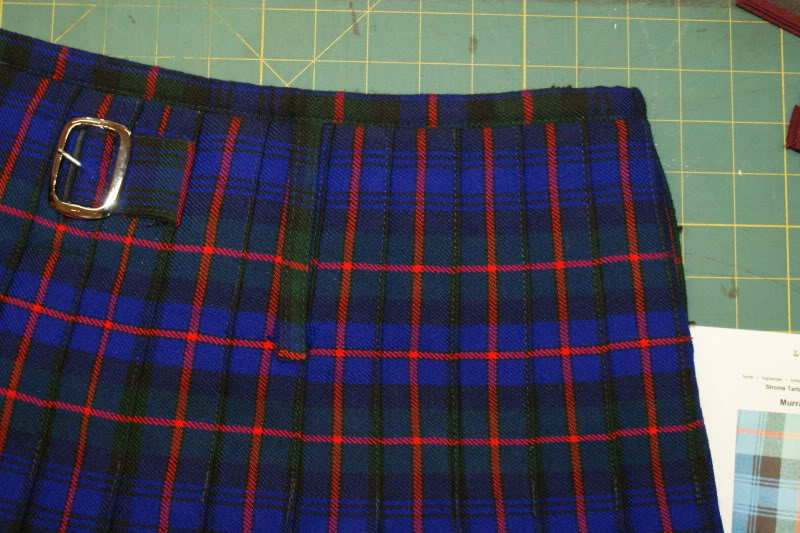
Now, as a side note - There is a common misunderstanding that military kilts were somehow designed to fit differently than others. This is actually because it was common not to cut the single-width fabric. The kilt was made so that the bottom was where the unit regulations said it should be. The top of the kilt was allowed to be where ever the single-width fabric was and it would end up at different places depending on the wearers height. It was thought at this time, that for good health, that you must keep the kidneys warm.
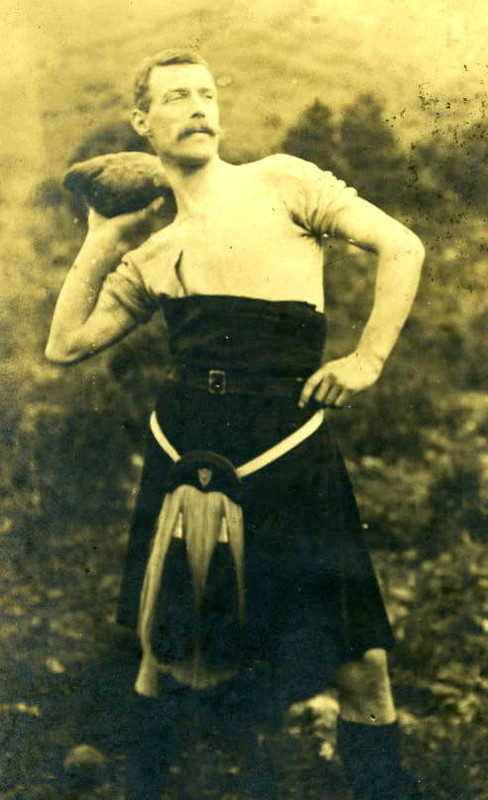 Notice that the bottom of the kilt is at the top of the knee and the belt, (there are no straps and buckles on this kilt) is at the anatomical waist, but the top is above the bottom of the breast bone.
Notice that the bottom of the kilt is at the top of the knee and the belt, (there are no straps and buckles on this kilt) is at the anatomical waist, but the top is above the bottom of the breast bone.
So - how to you tell where the kilt you have, was designed to be worn?
One way is to find where the bottom of the Fell area is. - -
Now I have to define "The Fell Area". The Fell Area of a kilt is that portion of the back that is sewn down and tapered.
For the pleats to hang well, and to swish well, the bottom of the Fell Area should be right about the crest of the hips and buttocks.

Put your kilt on and reach around behind yourself. Slide a finger up the pleats until you feel where the stitching stops. This should be right about level with the joint of your thigh bone and the pelvis.
If necessary, you may have to adjust the height of the straps and buckles.
Finding out where a non custom kilt was designed to be worn using the bottom of the Fell Area is a very good way to see where you need to cinch the straps and buckles.
This will insure that the pleats hang straight and parallel and swish well.
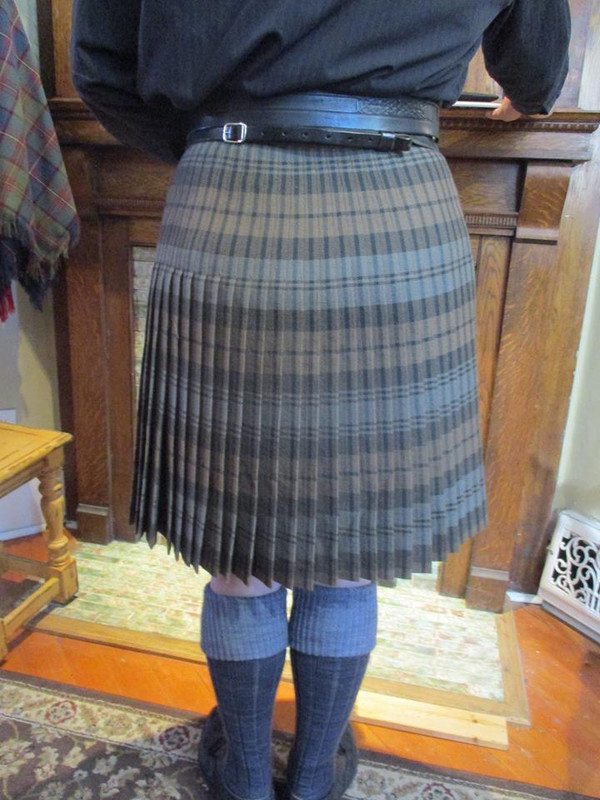
If the bottom of the Fell Area is below the crest of the hips and buttocks you may see large shower curtain folds develop in the pleats.
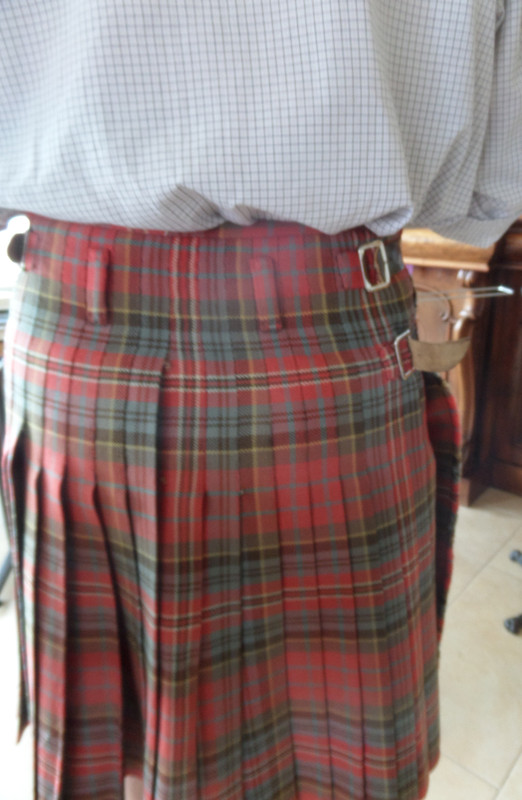
If the bottom of the Fell Area is too high the pleats will splay apart and outward.

Another thing to look at is where the bottom of the kilt hits your knee. If you have a kilt made to the 'standard' 24 inch total length this could be almost anywhere depending on your height. There simply can be no 'correct' place for the bottom of a kilt made to some standard and not your actual height and leg length.
If you have or make a kilt using "The Art of Kiltmaking" you will have the bottom of the kilt at the top of the knee cap.
As a general rule of thumb you want to show some leg between the bottom of the kilt and the top of the hose. But you also don't want the kilt to be too short.
In this photo even an untrained eye can see that two of the kilts look too short and one looks to be too long.

The correct answer to the orginal question in post 1 of this thread really is - it is up to how the kilt is made, the wearers knowledge of his kilt, and - the wearers personal preference.
The bottom of a kilt today may be anywhere from the top of the knee cap to the bottom on the knee cap. Or about a 2 inch difference.
Most today will say that a kilt, when worn with kilt hose, looks best worn at the top of the knee cap.
If worn with boots and hose scrunched down, you may feel that mid knee or perhaps even bottom of knee looks best.
Even in the "Tartan Army" in Scotland, it is quite common to see kilts that are designed to be worn high, being worn down where jeans usually go. This has the tendency to drop the bottom of the kilt below the knees.

Of course with the Utility style kilts all of this goes out the window.
In the end it falls to the kilt makers. We who do this for a living, who look at kilts all day, and who have the insight into how a kilt is made.
It should be incumbent on us to teach and advise our customers how to look their best without ever forgetting that it is the customers hard earned money on the table. We need to make it fit the wishes of our customers.
The 'standard' 24 inch length we see on the off-the-rack kilts, on kilts sold in bulk on Ebay, the lower end kilts, and those in rental fleets all over the world, are the reason we see the middle and below the knee kilts. It is a fact that 24 inches is not perfect for everyone.
If the kilt a new guy is looking at, or asking about, is designed to be worn high, we need to teach that fact.
It really is all about how the kilt is made! One size does not fit all!
Bookmarks